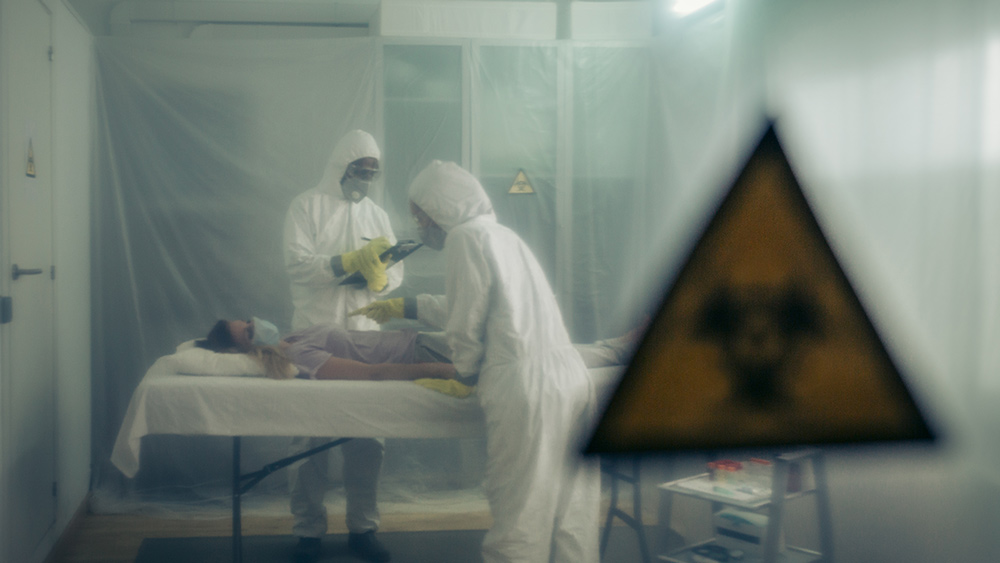Review of 3,000 studies finds almost 400 medical reversals: HUNDREDS of current medical practices are INEFFECTIVE
01/26/2020 / By Lance D Johnson

Hundreds of current medical practices are ineffective and/or unsafe. Researchers from the Knight Cancer Institute at the Oregon Health and Science University in Portland reviewed 3,000 medical studies conducted over the past fifteen years. The studies were taken from three prestigious medical journals: The Journal of the American Medical Association (JAMA), The Lancet, and The New England Journal of Medicine (NEJM). The researchers identified nearly 400 cases of medical reversal – clinical evidence that challenges the validity, necessity, and/or safety of modern medications and medical procedures.
Hundreds of medical practices are ineffective and/or dangerous
A medical reversal can only occur if researchers are brave enough to challenge the science. Medical reversal can occur if a new clinical trial provides results that contradict currently accepted medical science. New results can be obtained by way of better controls, design, size or endpoint. Physicians and patients want to believe in the procedure, in the medication, and the science, but many times, currently accepted medical science and evidence-based medicine is a sham.
In the new meta-analysis, medical reversal occurred most often in cardiology (20%), public health and preventative medicine (12%) and critical care (11%).
Broken down into categories, medical reversals included ineffective medications (33%), dangerous procedures (20%), misleading science on vitamins and supplements (13%), unsafe medical devices (9%), and faulty system interventions (8%).
Senior author, Dr. Vinay Prasad says, “There are a number of lessons that we can take away from our set of results, including the importance of conducting [randomized controlled trials] for both novel and established practices.”
“Once an ineffective practice is established, it may be difficult to convince practitioners to abandon its use,” he continued. “By aiming to test novel treatments rigorously before they become widespread, we can reduce the number of reversals in practice and prevent unnecessary harm to patients.”
Why medical science progresses slowly and harms patients along the way
In an age of evidence-based medicine, medical reversal often occurs because we learn that a drug or therapy either failed to achieve its intended goal or inflicted more harm all along. Common examples of medical reversal include the discontinuance of routine hormone replacement therapy, avandia, ezetimibe, and atenolol. Clinical trials would eventually show these drug protocols to be ineffective and/or harmful even after they were routinely used as “evidence-based medicine.”
Another example includes the needlessness of routine mammography for women aged 40 to 49 years. A study conducted by the U.S. Preventive Services Task Force (USPSTF) in 2009 recommends that women in this age group do NOT get a mammogram because there was no change in mortality for women who did not get the screening.
Another good example of medical reversal includes the use of class 1C anti-arrhythmics after myocardial infarction. The CAST trial contradicted the drug’s use in these situations, potentially saving lives in the process. Another contradiction was found for routine stents for stable coronary disease. The COURAGE trial reversed currently accepted medical practices for routine stenting, saving many lives in the long run. Almost every medical procedure, drug, and biologic (vaccine) needs to be questioned, challenged and held to new clinical standards. Medical science is not to be worshiped; it is to be advanced through the scientific process.
Full blown medical reversal is avoided because it implies that authorities are responsible for harming patients under the old scientific model. Medical professionals do not want to admit fault and take responsibility for harming patients. Abandoning a familiar drug or commonplace therapy requires that medical authorities humble themselves across the board. Furthermore, financial rewards, financial conflicts of interest and costly medical infrastructure prevent changes to faulty medical procedures and drug protocols. Medical authorities may be hesitant to learn and invest in new standards of care.
Learn more about medical reversal and why we must raise the bar before adopting new technologies.
Sources include:
Tagged Under: bad doctors, Clinical trials, Collapse, dangerous therapies, financial conflicts of interest, harmful medicine, medical reversal, medical science, research, science worship, standard of care



















